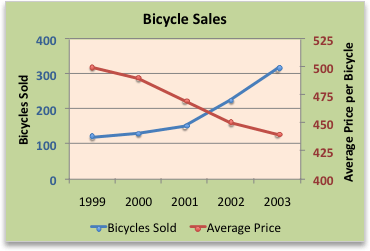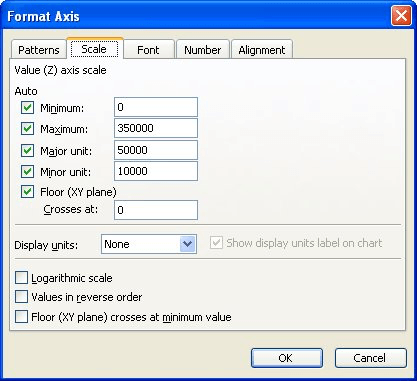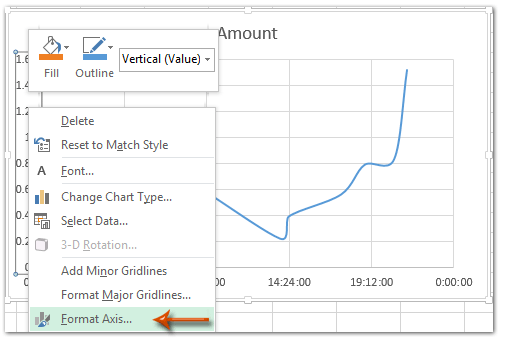

- #Excel for mac 2016, reduce scale of graph manual
- #Excel for mac 2016, reduce scale of graph code
- #Excel for mac 2016, reduce scale of graph series
#Excel for mac 2016, reduce scale of graph series
This is a very easy technique, applicable to line, column, and area charts (in all cases, change the added series to a line chart series). You can also change the scale for the purpose of viewing a clean layout. However, if we make sure that our minimum and maximum formulas in B10 and B11 include the added data, the hidden series of both charts include the new maximum, so the axis scales are the same. Changes to the x-axis adjust the categories within this axis. Mac Excel 2011: Click on Axis, and click Secondary Axis in the Plot. The 2012 data for Company 2 is cut off between Q3 and Q4. Here is how the charts would look if the maximum had been manually fixed at 120. Here are the two original charts, with no attempt to synchronize axes.

Company 2 has really started to take off.
#Excel for mac 2016, reduce scale of graph manual
To demonstrate the value of this approach instead of the manual approach, let’s add another year of data. It’s a simple matter to format the added series to use no line, and the charts will magically stay in synch. Notice the two charts have the same Y axis maximum, because they have the same maximum value from the added series. I want the maximum to range with the data, so I enter =B11 into C11.Ĭopy C9:C11 and use Paste Special to add this data to each chart as a new series, with data in columns and series names in the first row (don’t worry about X values). I want the minimum to be zero, so I simply type 0 in C10. Note: Excel ignores manual page breaks when you use the Fit To option. In the Tall box, enter 0 so that the number of pages tall is unspecified. In the Page wide by box, enter 1 (for one-page wide). Cells C10 and C11 show the values I will use. On the Page tab, select the Fit To check box. Cells B10 and B11 compute the minimum and maximum of the data. To determine what values to use, I add a small summary table near the main data table. I could manually set the Y axis maximum for both charts to 120, but if the data changes, I’ll have to reset both charts again. I don't want my tooth wear stages to be auto-selected as the x-axis scale/labels.

Since Company 2’s data is higher, the maximum Y axis scale is larger. How in the world do I change the scale on a graph in Excel 2011 for Mac I'm trying to plot tooth wear data (x axis) and frequency (y axis) in a bar graph/histogram, and I'm having a heck of a time. tables and charts for managing small to large scale business process. But I still want to be able to compare the two companies. Excel 2016 is a version of Excel developed by Microsoft that runs on the Windows. Here is all of the data plotted in a single chart.Ĭomparing data for a given company is most important, so I want to separate the data into separate charts for each company. In the data below, there are two years of data for two different companies.
#Excel for mac 2016, reduce scale of graph code
You could manually reset the axis scales whenever the data changes, or you could write some VBA code to keep them synchronized, but I’m going to show a simple and reliable way to handle this. In your dashboard, you may have several charts that show different but related data, and you’d like them to have the same axis scales to make comparisons from chart to chart possible.


 0 kommentar(er)
0 kommentar(er)
